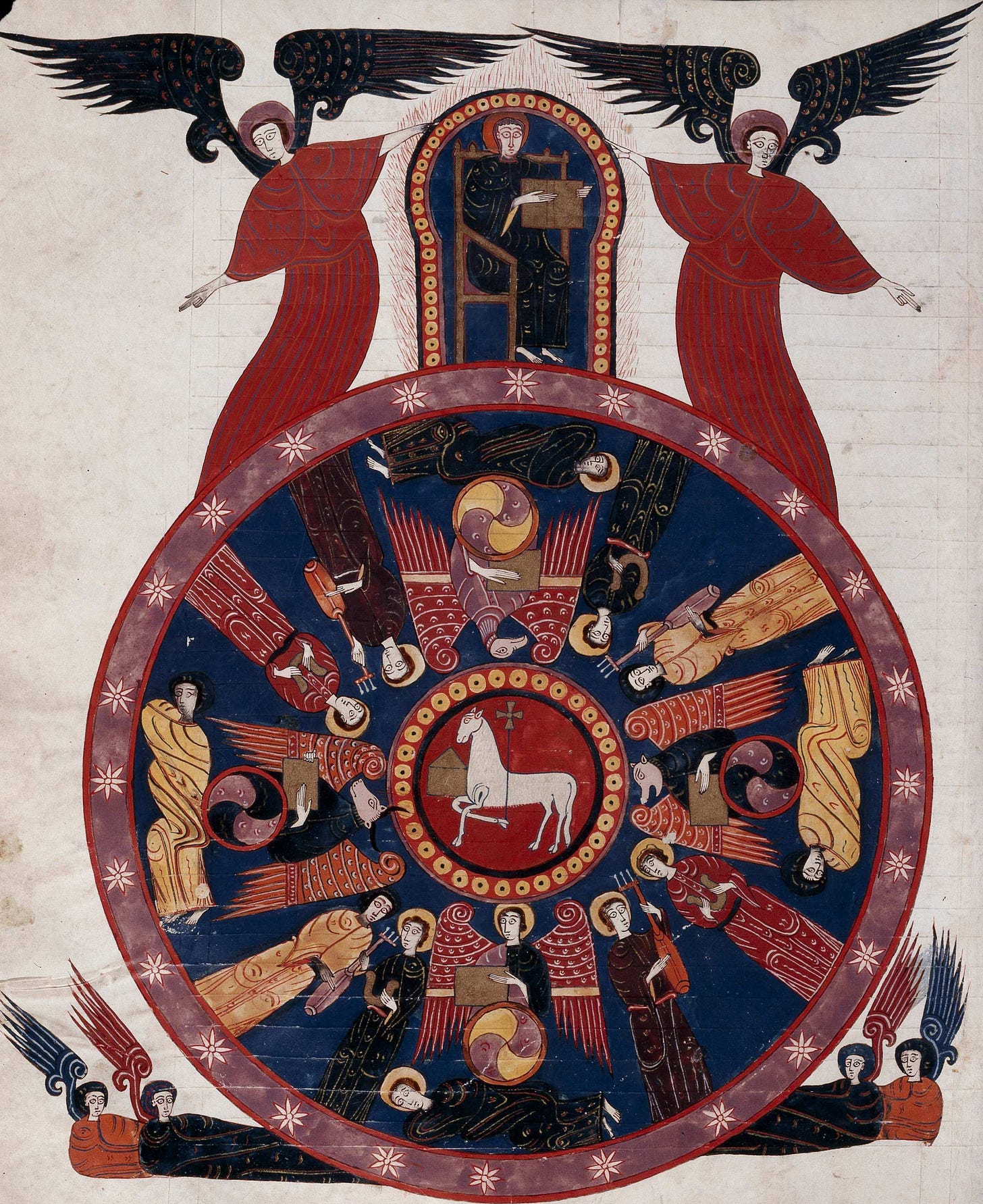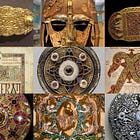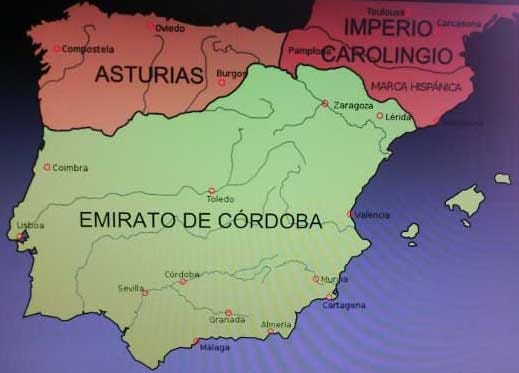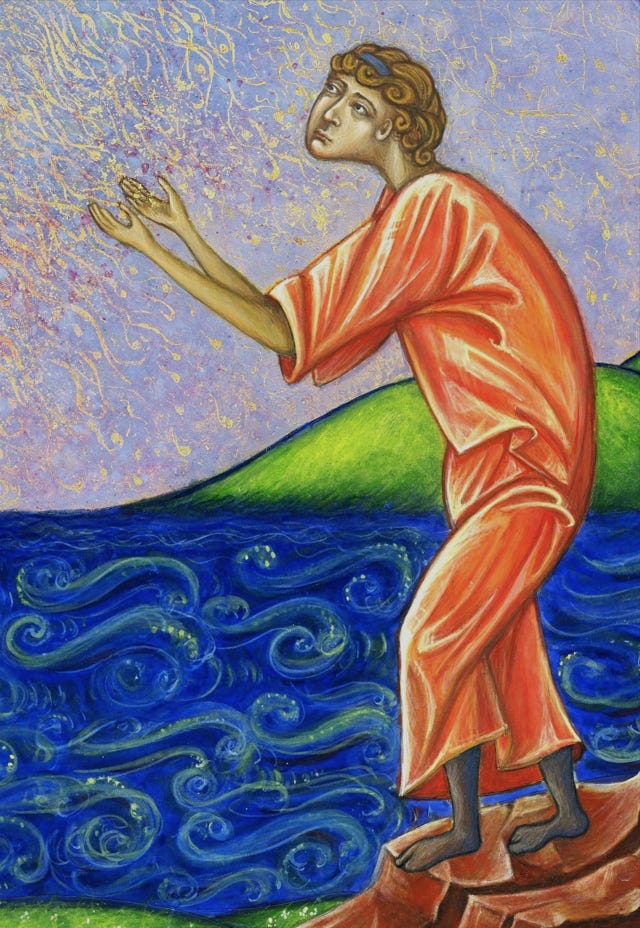Kingdom of Asturias; the Christian Art of Early Medieval Spain
Asturian Pre-Romanesque, a unique Christian artform
In April, we explored a little of the history, and the art, of the Christian Visigothic Kingdom of the Spanish peninsula, and talked about what happened when the forces of the Umayyad Caliphate invaded in 711. Today we will follow the Christian refugees north into the mountains, where a handful of survivors regrouped in the remote, forested mountains of Asturias.
There, under the leadership of a Hispano-Roman nobleman named Pelayo (Pelagius), they laid the foundations of a new Christian kingdom that was to start the long road back in the Reconquista. This small, embattled kingdom was deeply rooted in the Christian faith and held on to a cultural and spiritual continuity with Christian late antiquity that was manifested in art, architecture, music and liturgy.
A little background reading
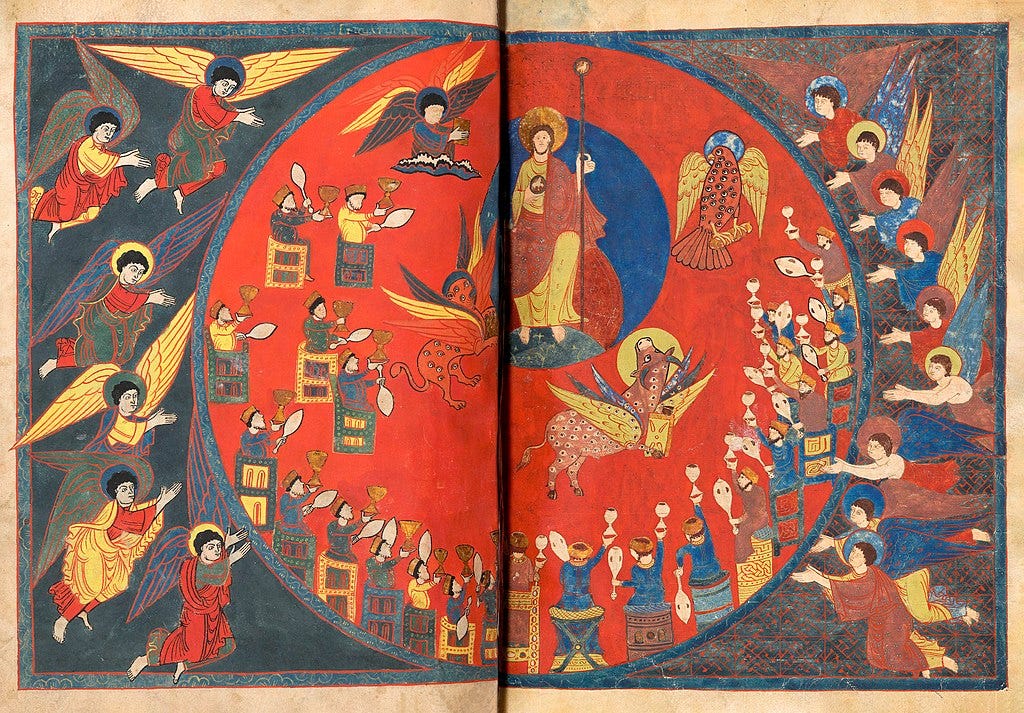
We touched briefly on the art of the Visigothic Kingdom in our exploration of the art of the “Dark Ages”, and in “What Happened in Spain” - which you can read here:
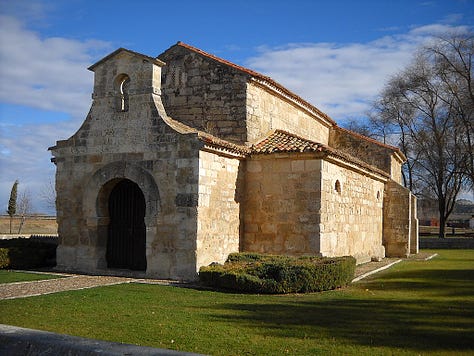
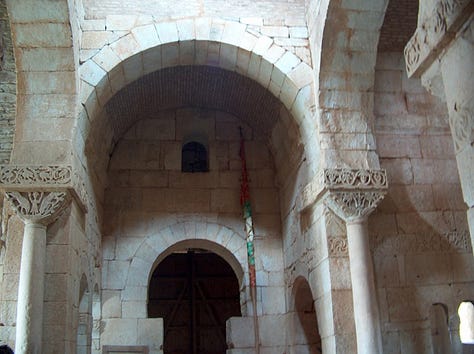
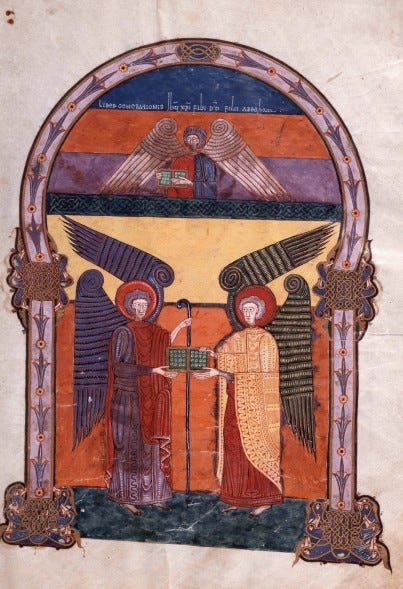
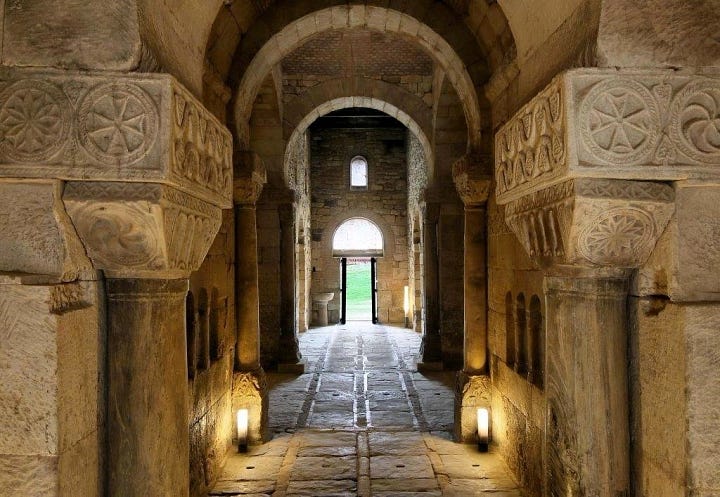
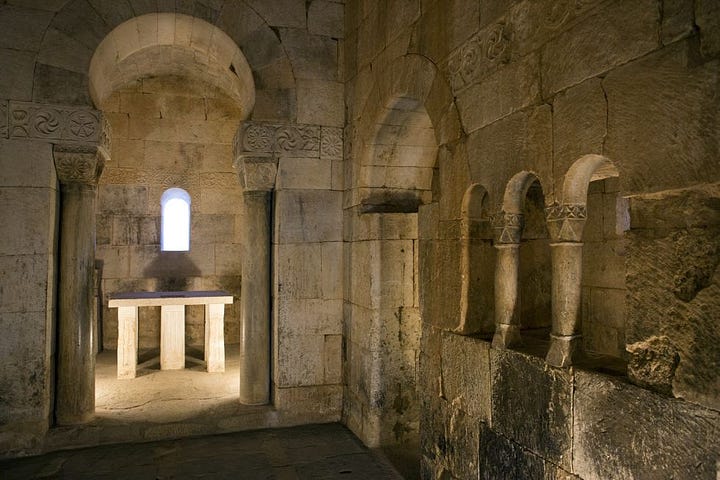
In today’s post for paid subscribers, we turn our focus on the history, art and architecture of the Kingdom of Asturias, the small, defiant Christian realm that emerged in the aftermath of the Islamic conquest of Visigothic Spain. While the political and military story of Pelayo’s guerrilla resistance is often told, less attention is paid to the extraordinary cultural and religious continuity this mountain kingdom preserved. In its isolated churches, monasteries and sacred buildings, we find one of the most distinctive early medieval artistic styles in Europe: Asturian Pre-Romanesque. We’ll look at how it draws on Visigothic, Roman and Eastern Christian traditions.
This will include its defining architectural features, such as the tripartite sanctuaries, horseshoe arches, elevated tribunes and decorative stonework as well as fresco wall paintings and manuscripts.
At The Sacred Images Project, we explore Christian life, thought, history, and culture through the lens of the first 1200 years of sacred art. This work is entirely reader-supported. No ads, no algorithms, just careful research and thoughtful analysis, made possible by your subscriptions.
Free subscribers receive a weekly article uncovering the treasures of Christian tradition. Paid subscribers ($9/month) receive a second weekly piece, plus bonus posts with high-resolution images, video explorations and more.
If you value this work and want to help it grow, I hope you’ll subscribe to join us below the fold today:
From the Shop
I’m happy to offer prints of this little figure, part of a painting - egg tempera and gold leaf - I did for a client in the contemporary Byzantine iconographic style. He is the speaker in Psalm 84, Quam Dilecta: “My soul longeth, yea, even fainteth for the courts of the Lord: my heart and my flesh crieth out for the living God.”
If you’d prefer to set up a monthly contribution in an amount of your choice, you can also do that at the studio blog, or make a one-off donation to help keep this work going. If you subscribe through my personal page, I’ll add you as a complimentary subscriber here. And thank you.
I hope you’ll consider subscribing to join us below the fold.




